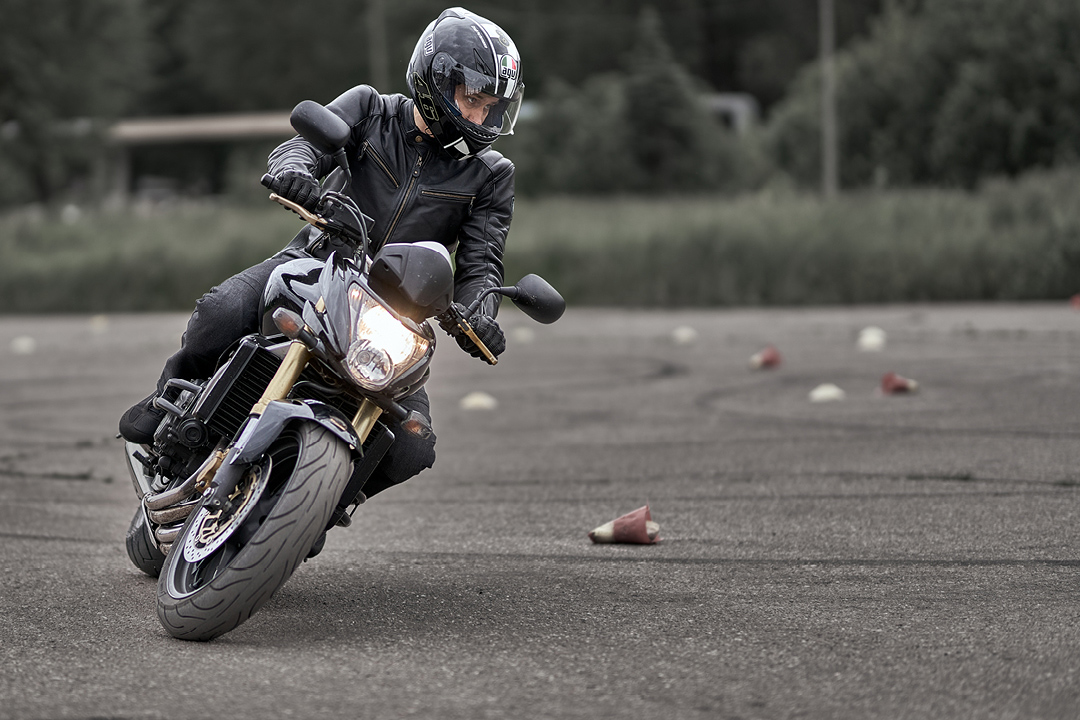Riding a motorcycle can be an exhilarating and liberating experience. However, for beginners, it can also be quite intimidating. But fear not, with the right guidance and practice, anyone can learn how to ride a motorcycle confidently and safely.

Credit: m.youtube.com

Credit: monimoto.com
Starting the Engine
Before you hop on your motorcycle and hit the road, it’s crucial to familiarize yourself with the basic controls and functions. Start by turning the ignition key to start the engine. Most motorcycles have a simple ignition switch, usually located near the handlebars or on the fuel tank. Once the engine is running, you’re ready to begin your ride.
Mounting the Bike
Proper mounting of the motorcycle is essential for a smooth and safe ride. Stand on the left side of your bike with your knees slightly bent and your weight centered over your legs. Reach over and grab the right handlebar, then swing your right leg over the seat and settle onto the bike. Ensure that you have a firm grip on the handlebars and that your feet are securely positioned on the foot pegs.
Basic Controls
Understanding the basic controls of a motorcycle is fundamental to riding. The throttle, usually located on the right handlebar, controls the speed of the bike. As you release the clutch lever, gently pull back on the throttle to accelerate. Additionally, familiarize yourself with the front and rear brakes, as well as the gear shifter for changing speeds.
Shifting Gears
Shifting gears on a motorcycle is a critical skill to master. Most motorcycles have a manual transmission, typically with five or six gears. To shift gears, use your left foot to operate the gear shifter. As you gain speed, upshift by gently pressing the gear lever with your foot. Conversely, downshifting is necessary when slowing down or coming to a stop.
Steering and Maneuvering
When it comes to steering and maneuvering your motorcycle, it’s essential to maintain a proper riding posture. Keep your back straight, elbows relaxed, and look ahead in the direction you want to go. For sharper turns, lean your body and the motorcycle into the turn while maintaining a steady speed. Practice turning, weaving, and maneuvering through obstacles in a safe, open area to build confidence in your handling skills.
Braking and Slowing Down
Knowing how to effectively use the brakes is crucial for safe riding. The front brake, located on the right handlebar, provides the majority of the stopping power, while the rear brake, operated by the right foot pedal, helps stabilize the bike during braking. Practice applying both brakes smoothly to slow down and come to a controlled stop without skidding or losing balance.
Riding as a Beginner
For beginners, it’s advisable to start in a low-traffic area such as an empty parking lot or quiet street. Begin by familiarizing yourself with the clutch control, throttle response, and braking. As you gain confidence, gradually practice riding in more challenging environments, such as moderate traffic and varying road conditions.
Learning Resources
While learning to ride a motorcycle on your own is possible, enrolling in a motorcycle riding academy or taking a motorcycle safety course can provide invaluable guidance and hands-on training. These programs offer structured lessons, expert instruction, and practical riding experience to help beginners develop essential riding skills and safety awareness.
Frequently Asked Questions
How Should A Beginner Ride A Motorcycle?
A beginner should follow these steps to ride a motorcycle: 1. Start the engine and release the clutch while pulling back on the throttle. 2. Accelerate slightly and lift your feet as you begin to move. 3. Shift gears when slowing down or speeding up significantly.
4. Practice regularly to improve your skills. 5. Consider taking a motorcycle safety course for better understanding and proficiency.
Is It Easy To Ride A Motorcycle?
Riding a motorcycle is easy to learn with enough practice. It may seem intimidating at first, but anyone can master it. Start by starting the engine and pulling back on the throttle as you release the clutch. Accelerate and lift your feet as you begin to move.
Shift gears when necessary. With time and experience, riding a motorcycle will become second nature and a lot of fun.
How Long Does It Take To Learn How To Ride A Motorcycle?
It typically takes a year to become proficient in riding a motorcycle if you can practice a little every week. Taking a motorcycle safety course can speed up the learning process. Anyone can learn to ride a motorcycle with enough practice, and it becomes second nature over time.
When To Shift From 1st To 2nd Gear Motorcycle?
Shift from 1st to 2nd gear on a motorcycle when reaching around 10-15 mph, smoothly easing off the throttle while pulling in the clutch.
Conclusion
Learning how to ride a motorcycle is a rewarding journey that requires patience, practice, and dedication. By familiarizing yourself with the basic controls, mastering essential riding techniques, and continually honing your skills, you can confidently navigate the open road on two wheels. Remember, safety should always be a top priority, so always wear proper safety gear and ride responsibly.
Whether you’re a beginner or looking to enhance your riding skills, understanding how to ride a motorcycle is the first step towards embarking on an exciting and fulfilling two-wheeled adventure.
References:
- wikiHow – How to Ride a Motorcycle
- Saint CC – How to Ride a Motorcycle
- LiveAbout – Motorcycle Riding for Beginners
- RiiRoo – How to Shift Gears on a Motorcycle (THE RIGHT WAY)